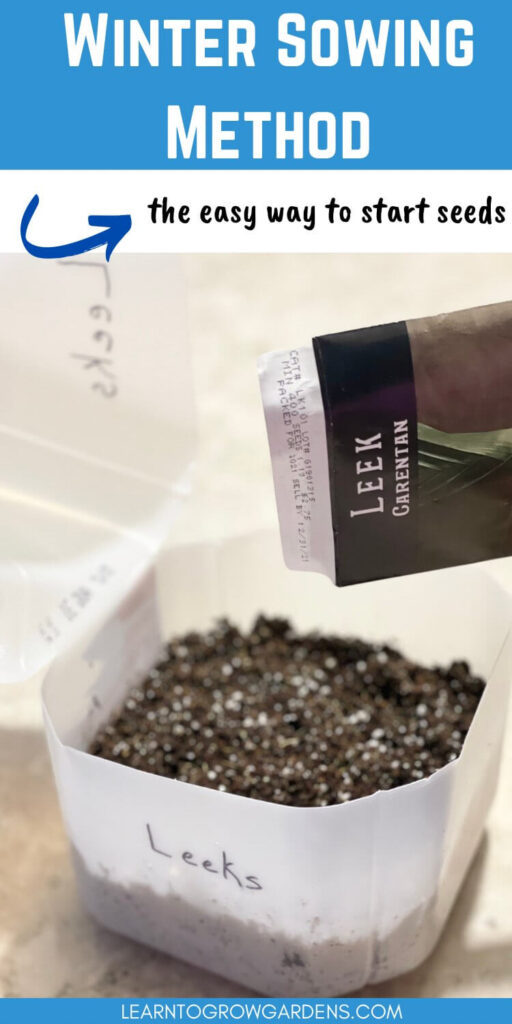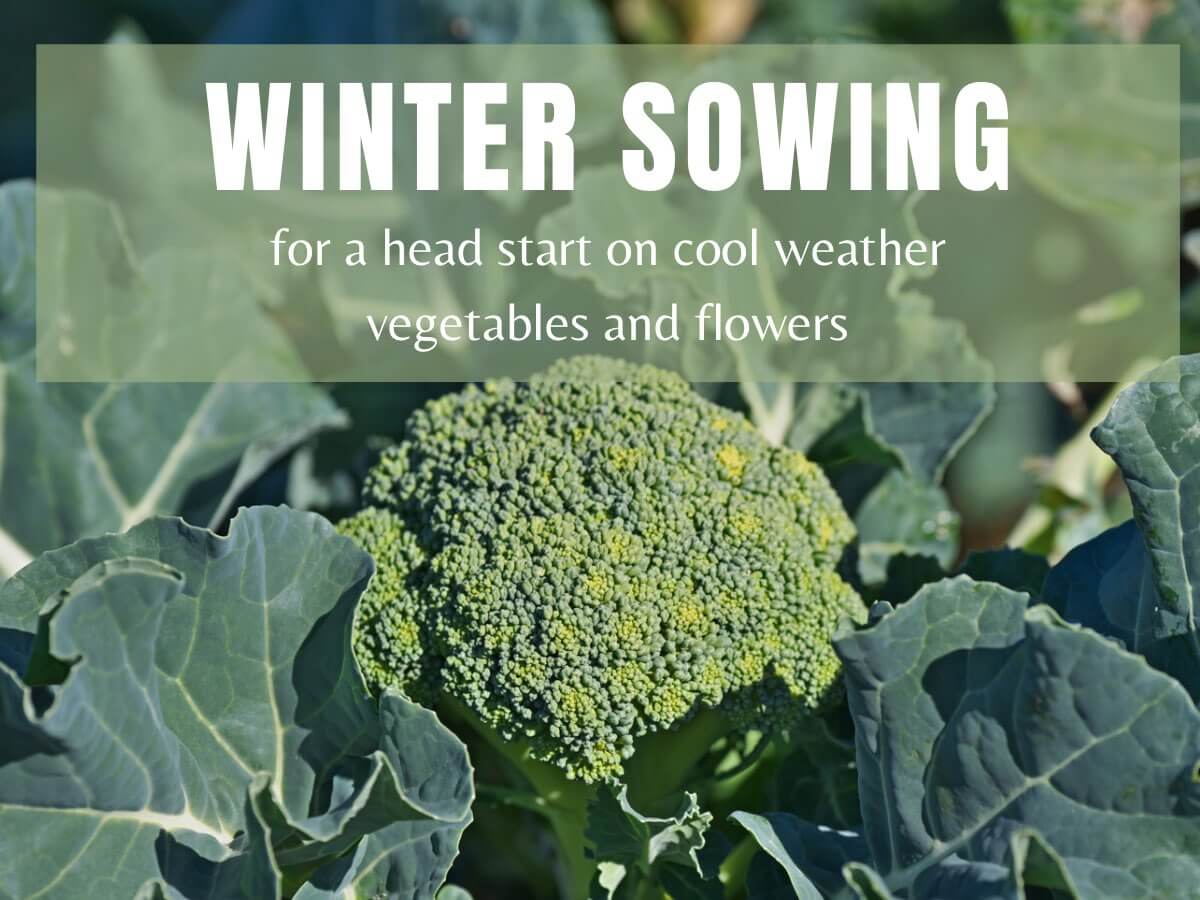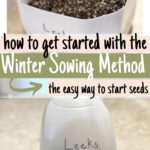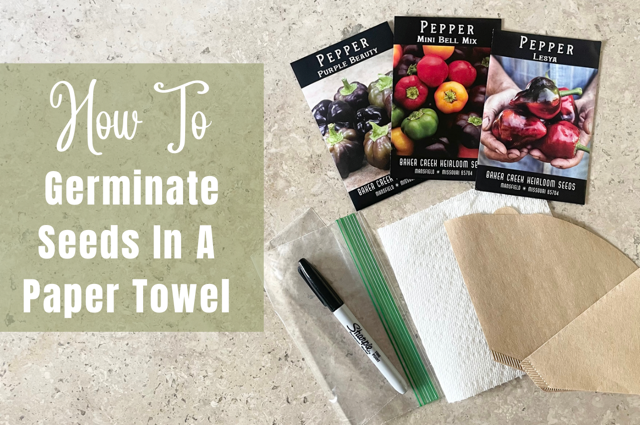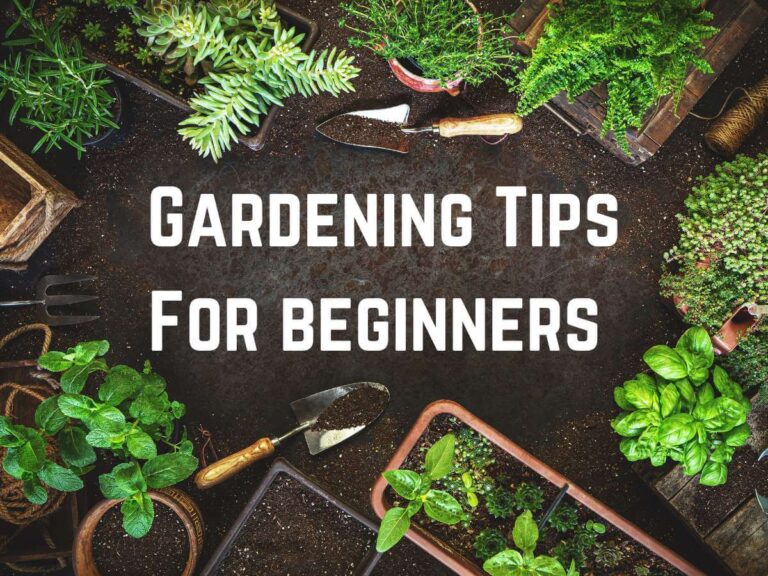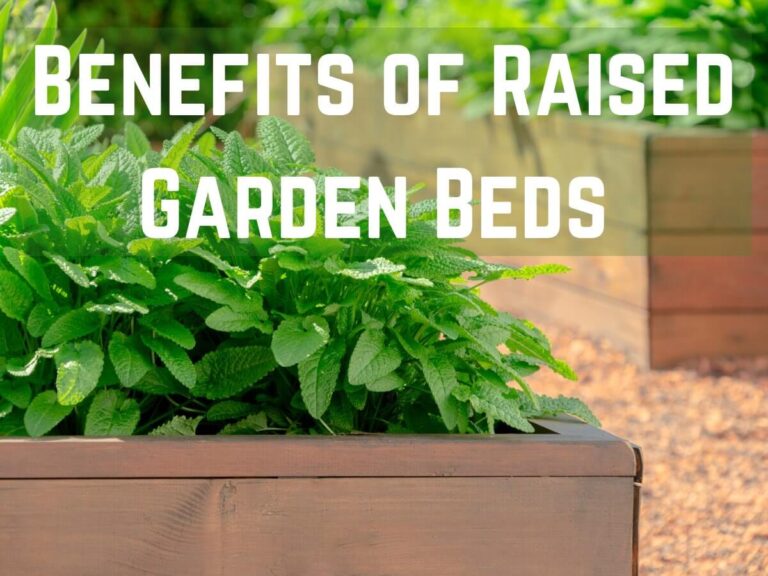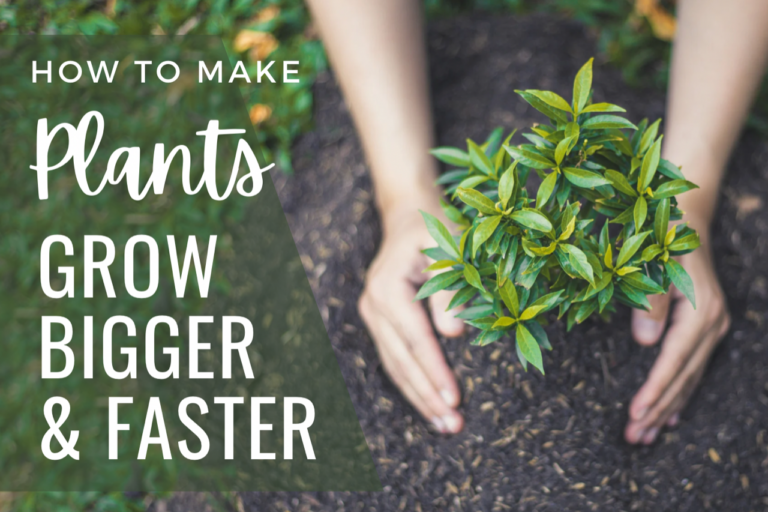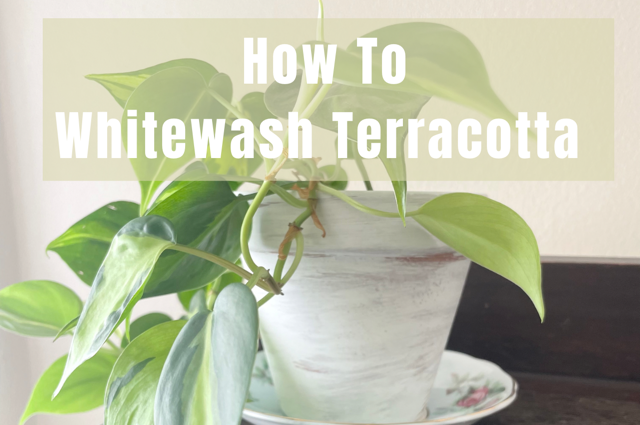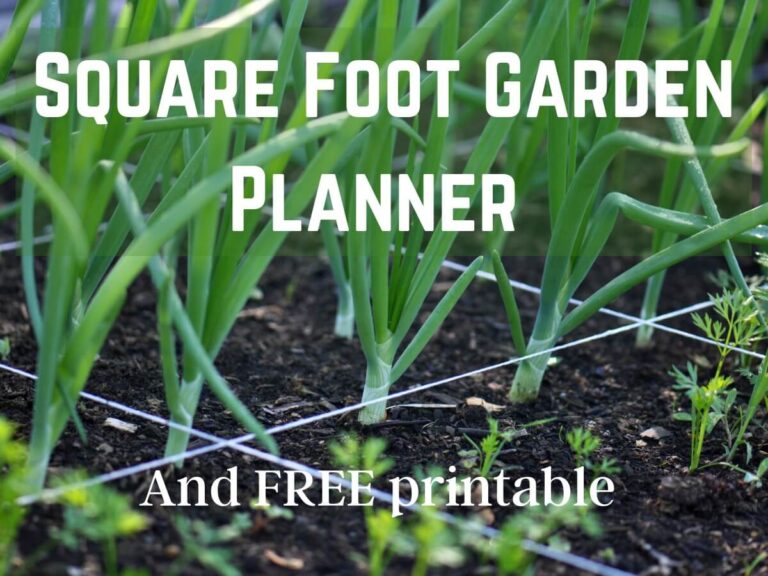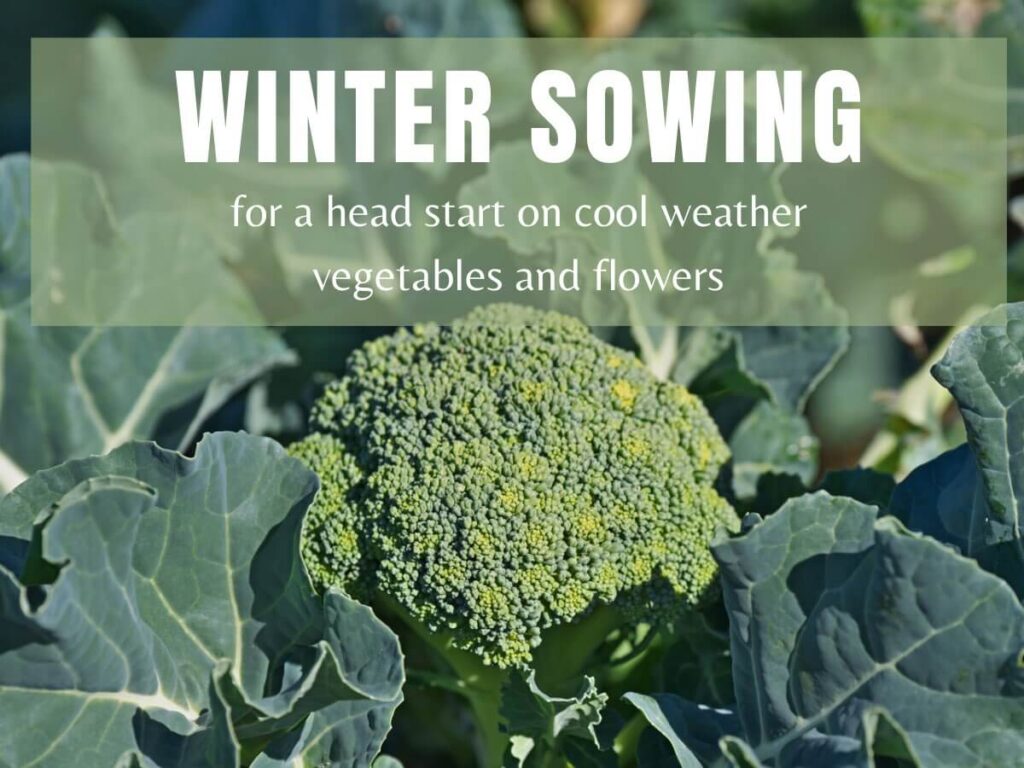
What Is Winter Sowing? An easy, hands free way to start seeds
I don’t know about you, but somewhere around the middle of January, I find myself wandering the garden center and dreaming about the upcoming gardening season. I start a lot of seeds in February and early March, but January is far too soon to get most of them started. It’s also a lot of work taking care of all those trays of seedlings as they grow, and then hardening them off when the time comes.
Fortunately, there’s a relatively new gardening trend making the rounds, and I am super excited about it! It’s called Winter Sowing, and it’s a great way to work with mother nature, and get an early start on sowing some of your cold hardy flower and vegetable seeds.
Winter sowing is a super easy way to sow seeds early, grow stronger and hardier seedlings, and not have to fuss over them like seeds started indoors. Using plastic jugs and a little potting soil, you’re able to create a mini greenhouse to start your seeds. The process is similar to starting seeds in a cold frame, without the space or materials a cold frame would need. It’s so easy, I’m bummed I didn’t hear about it sooner!
What is winter sowing?
Winter sowing is a method of starting seeds in milk or water jugs, or other plastic containers, during the cold winter months. This allows the seedlings a period of cold stratification, along with the natural process of acclimating to the weather. The milk jugs act like miniature greenhouses, using the sunny days in late winter or early spring to warm up the soil. As the soil warms, the seeds sprout, and are ready to be planted much sooner (and easier!) than seeds sown indoors under grow lights.
What are the benefits of Winter Sowing?
Winter sowing has many benefits over starting seeds indoors. A few benefits include:
1. Natural cold stratification. Many seeds require a period of cold temps to germinate. The temperature and length of time varies by seed types, but winter sowing allows seeds to natural experience cold temperatures outdoors.
2. Control and protection over seeds planted. There’s no need to worry about rains washing away your seeds, or birds and small critters eating them.
3. It’s inexpensive. Grow lights, seeds trays, and set up can get expensive. With winter sowing, the only expense are seeds and soil, and as many milk jugs or plastic containers you can round up for free!
4. Milk jugs = mini greenhouses. These offer ideal conditions for your seedlings, with almost no effort needed from you. Sunlight warms the soil during the day, creating condensation “rain” and warm temps for germination and growth later.
5. No need to harden off your seedlings. This is probably my favorite benefit! No need to drag trays outdoors and indoors, for several days or weeks, while they acclimate to outdoor conditions. Since they’re grown outside, they’re already acclimated to temperature fluctuations.
- Hardier seedlings. Winter sown seedlings are hardier than seedlings grown under grow lights, or in a greenhouse. This makes for hardier plants, much more likely to survive once planted out in the garden.
- Seeds can be started earlier. A huge win in the middle of winter, when babying my houseplants and pouring through seed catalogs just isn’t enough.
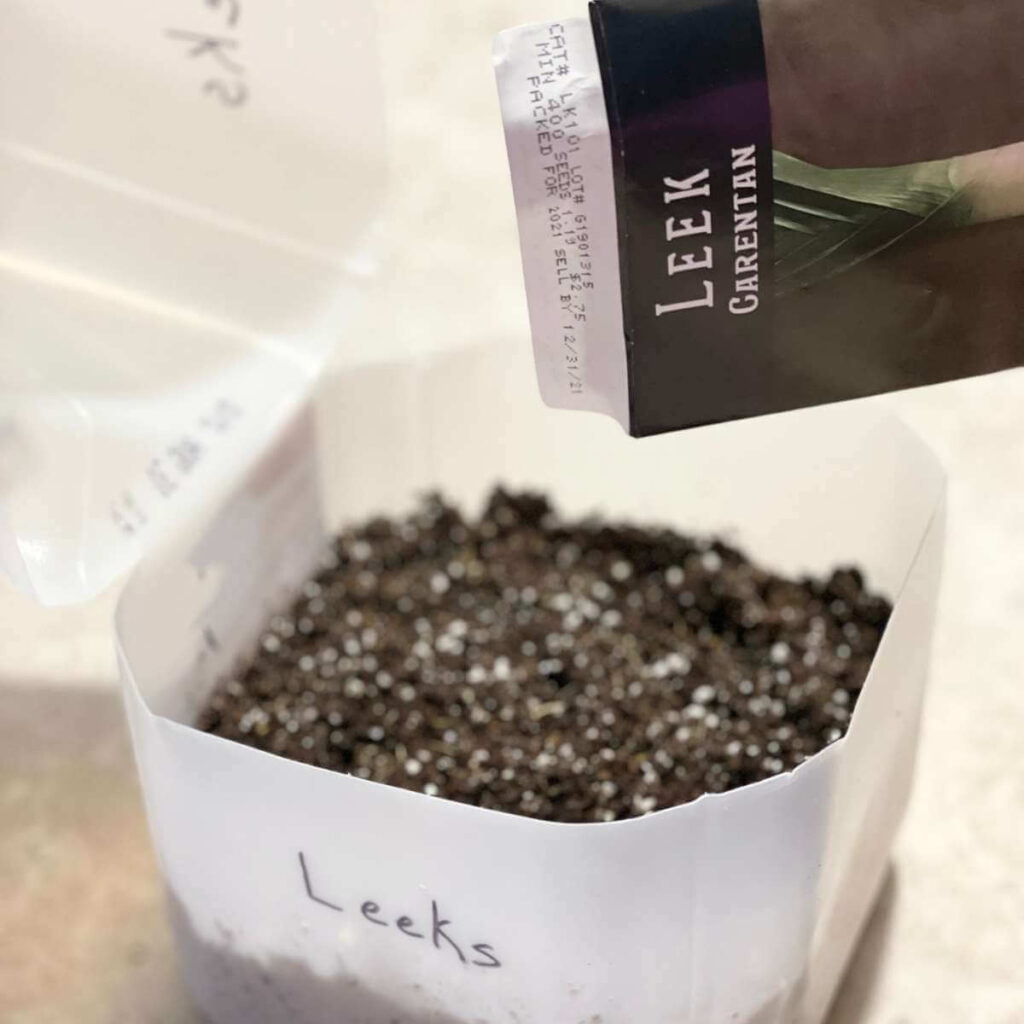
Which seeds are good for winter sowing?
In general, the best seeds for winter sowing are those that can tolerate some cold temps.
Spinach, brassicas, and leafy greens are all great options. Native plants in your area that naturally drop lots of seeds to overwinter on the ground are good choices, too. If you’re looking to winter sow flowers, cold hardy annuals, such as poppies, violas, or snapdragons also work great for this method.
When choosing seed packets for winter sowing, look for ones that are hardy in your growing zone, or require a period of cold stratification. Avoid seeds from plants that are typically heat lovers, like tomatoes, peppers, etc. They may germinate in your containers, but fail to survive an early warm up and later frost.
Seeds from plants that require a long growing season should be avoided, as well. For example, peppers may germinate with winter sowing, but not until the temperatures warm up in the spring. Since pepper seeds need to be planted 8-10 weeks before your last frost date, they will be weeks behind schedule with the winter sowing method.
Also, be sure to check out our free printable Seed Starting Chart to easily keep track of the seeds you decide to start.
The best seeds for Winter Sowing complete list:
Vegetables:
- Spinach
- Kale
- Brocolli
- Cauliflower
- Cabbage
- Arugula
- Collards
- Leeks
- Bok Choy
- Brussels Sprouts
- Swiss Chard
- Kohlrabi
- Lettuces
- Mache
- Radicchio
- Endive
- Peas
- Tatsoi
Herbs:
- Sage
- Oregano
- Dill
- Mint
- Chives
- Anise Hyssop
- Lavender
- Parsley
- Peppermint
- Cilantro
Flowers:
- Chamomile
- Cosmos
- Marigold
- Snapdragon
- Lavender
- Pansies
- Poppies
- Anise Hyssop
- Calendula
- Celosia
- Rudbeckia (Black-eyed Susan)
- Butterfly weed
- Echinacea (Coneflower)
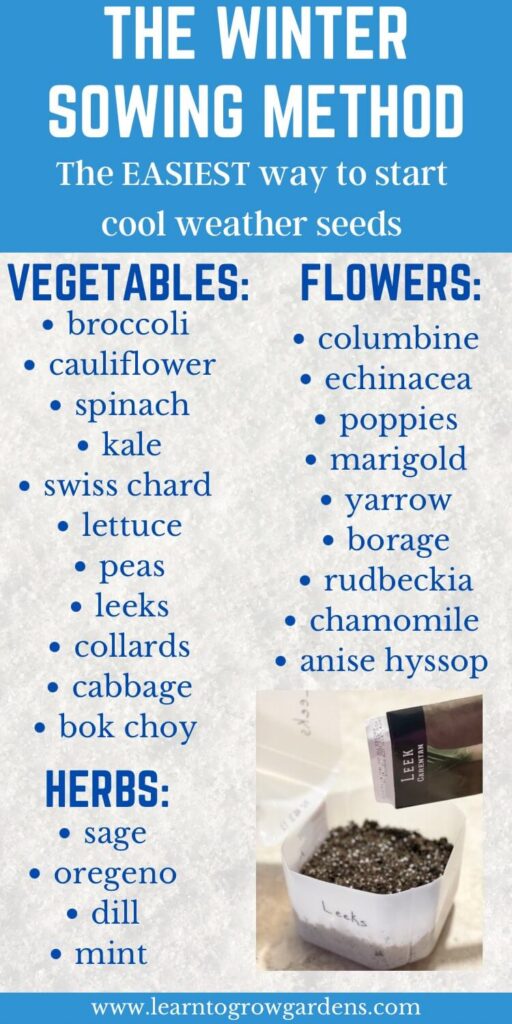

Where to buy seeds
Any brand of seed will work for winter sowing, but you may wish to order them online, given the time of year you’ll be planting them. Fortunately, online seed companies offer many varieties and deals that can’t be found in garden centers. For quality seeds, I highly recommend Baker Creek Heirloom Seeds and Johnny Seeds.
When should you start winter sowing?
The best time to start winter sowing is in the middle of winter, right around the Winter Solstice (December 21st.)
Winter sowing works with the cold weather to mimic the growth cycle of seeds that are naturally dropped by plants in the fall, and sprout on their own in the spring. The seeds hang out in the plastic jugs through the cold of winter. When the weather starts to warm up, the soil and seeds warm up and start to sprout, without any work from you!
Related:
Spring Gardening To Do List with free printable checklist
How To Germinate Seeds in a Paper Towel
How Long Does It Take For Vegetable Seeds To Sprout?
How late can I winter sow?
It’s recommended to have your seeds winter sown by mid-March. This ensures that they have plenty of time for cold stratification and growth before it’s time to plant them in the garden.
How to get started
The easiest way to start winter sowing is to collect old milk or juice containers, or food containers with clear or translucent lids.
Wash and rinse each container thoroughly.
Once washed, you’ll want to poke several small holes holes in the bottom of the container with a sharp knife. These drainage holes allow excess water to drain out of the bottom of the jug, so your seedlings don’t rot. Tip – an easy way to poke holes is to heat up the tip of a Phillips head screwdriver, and press it into the plastic while still hot. It should melt right through, leaving a round hole.
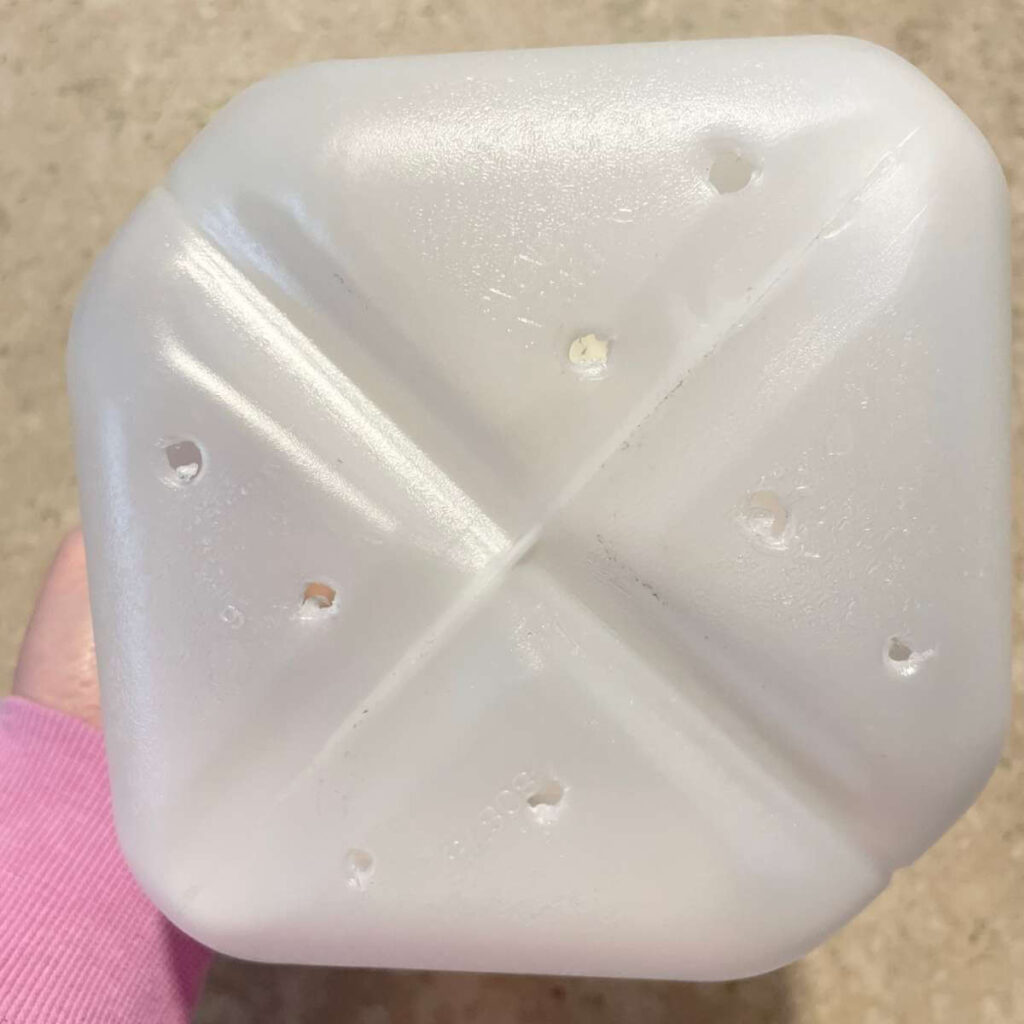

When your holes are done, cut the milk or juice containers in half, leaving a 2 inch section still connected. This will act as a “hinge.” The hinged lid will make it easier to open your container to check on your seedlings, and close it back up.
Next, add a 2-inch layer of potting soil to the bottom of your container, and a 2-inch layer of seed starting soil on top. This mixture will allow seeds to germinate in a loose mix, ideal for new seedlings. When the seedlings are ready for traditional potting soil and a bit of nutrients, the roots will be reaching into the bottom layer of potting soil.
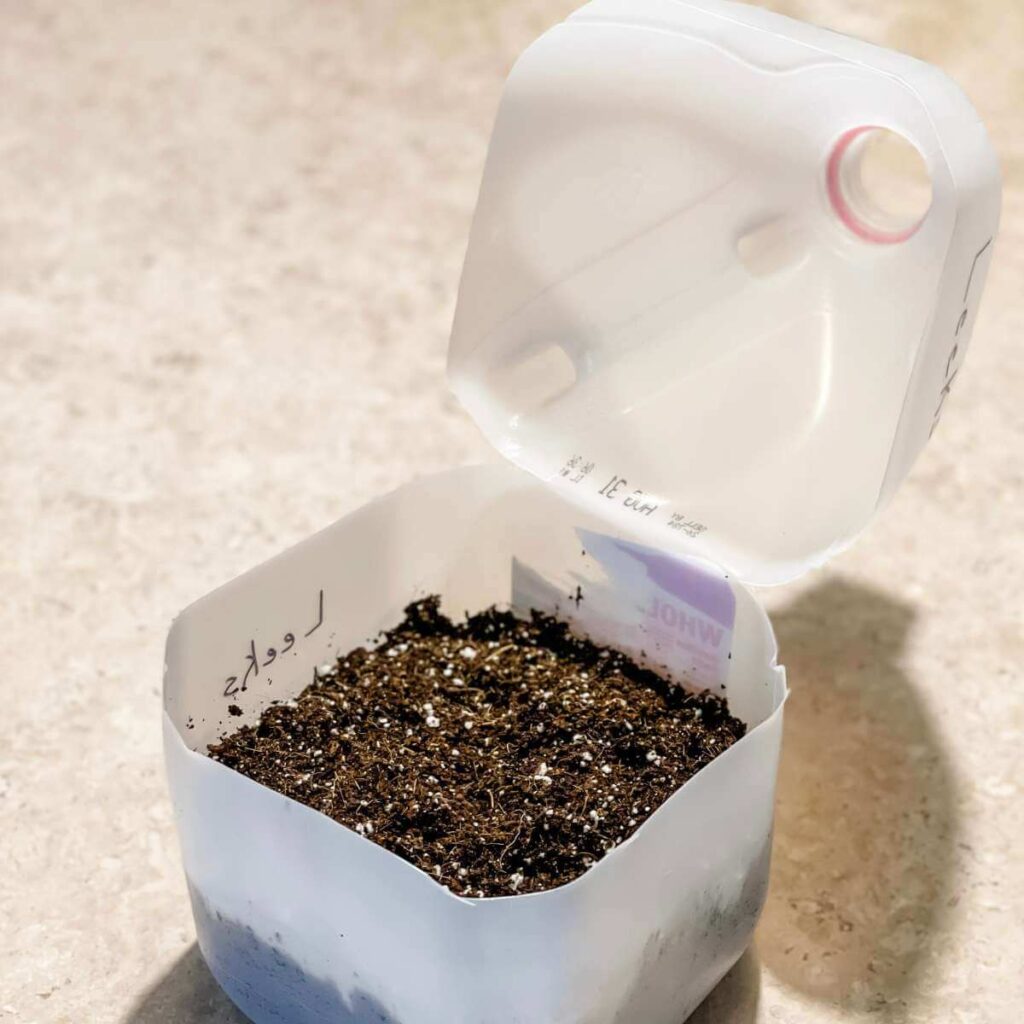

When your containers are filled with soil, lightly scatter your seeds across the surface of the soil. Gently pat the seeds into the soil, and add a very fine layer of soil on top. Less is more, as we don’t want the seeds buried so far that they won’t grow.



Water your seeds in, being careful not to wash them around in the soil. I like to use a spray bottle to do this.
Once your seeds are planted and watered in, close your containers and tape them shut using duct tape. Label each container with the type of seed, using a permanent marker or paint pen.
Set your containers in a sheltered spot outdoors, away from wind. I keep mine on my patio, or in unused raised beds. If you live in a cold climate, your containers will like a sunny spot for warmth. If you live in a milder climate, the winter sun is still warm enough to cause mini greenhouses to heat too fast, burning up your seedlings. A shady location is best.
Caring for winter sown seeds
It’s a good idea to keep an eye on your seedlings throughout the winter months. Warm temps can cause your containers to dry out a bit, and once seedlings emerge, they can be a little thirsty.
Once your seedlings have sprouted, they will appreciate more air flow with larger holes in the containers. They’ll be quicker to dry out, though, so keep an eye on the soil and water as needed.
If you experience a warm spell before seeds have sprouted, but you still have a lot of cold nights or frosty temps in the forecast, move your containers to a shady, cool spot to delay germination.
If the daytime temps are warm, and your jugs are in direct sunlight, the air inside each container can heat up pretty fast. You may need to vent each container to let out some of that heat. Be sure to close it up before nightfall, when temps drop back down.
When your seedlings are tall enough that they’re touching the top of the container, they’re ready to planted outside. Give them a few days and nights with the tops of the containers completely off, to finish acclimating to the outside. Once this is finished, you can transplant them to the garden!
To plant your seedlings, gently pull apart in clumps. Each container can give you 4-8 nice size clumps of seedlings, depending on the size of the container. Don’t be tempted to separate each individual seedling. Doing so can cause them to go into shock and not recover.
Final Thoughts
Winter sowing is a wonderful method to add to your gardening fun. It allows you to get your hands in the dirt while it’s still winter, and it’s such a simple method. Anyone can learn to winter sow! It would even be a fun activity for gardening with kids, or for brightening up the Winter Solstice.
If you have any questions about winter sowing, leave a comment below and I’d be happy to help! If you’re looking for more ideas about starting seeds, be sure to check out my post about Seed Starting Containers.
Have you tried winter sowing? I’d love to hear about your experience in the comments!
